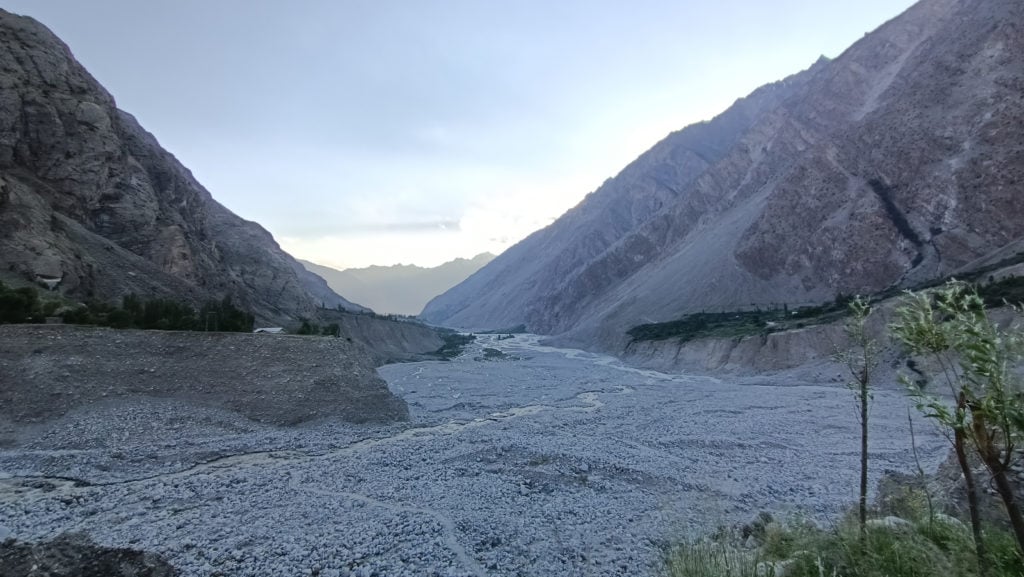by ZOFEEN EBHRAHIM

In Gilgit-Baltistan, communities hit by climate change-induced disasters suffer depression and insomnia
“Even after three years, the villagers remain heartbroken,” said Hajida Parveen, referring to a flood that washed away more than half of Badswat village in the Gilgit-Baltistan (G-B) region of northern Pakistan.
Parveen is a social mobiliser with the NGO Aga Khan Rural Support Programme (AKRSP). Since the glacial outburst flood in 2018, “nothing seems to cheer [the villagers] anymore”, she says. “A common refrain is ‘give us back our land’.”
The flood caused a huge lake to form. It blocked the road to 10 villages from the rest of Immit valley, in G-B’s Ghizer district. Thirty homes, a school and more than 65 acres of productive land were submerged. No life was lost, but around 1,000 people had to be evacuated. Most have now returned to the village but are still living in temporary shelters as their former homes have been wrecked by floodwater.
Across the Hindu Kush Himalayas, communities have been suffering the impacts of climate change, especially in the last two decades. In Ghizer alone, thousands of residents have experienced flash floods and landslides that destroy roads, farms, homes and other buildings. This is leading to mental health issues, something residents do not speak about in public for fear of social stigma.
A 2021 study in the northern mountains of Pakistan found that communities in the region have “insufficient or no alternatives to cope and to reduce the adverse impacts posed by natural stresses”. The study looked at 10 G-B districts with a long history of climate-induced hazards. It placed Ghizer among the three most vulnerable.
The Third Pole for more
